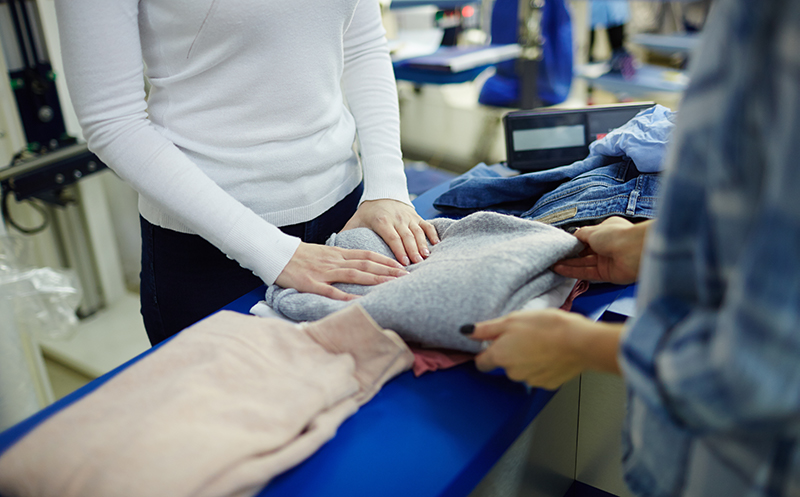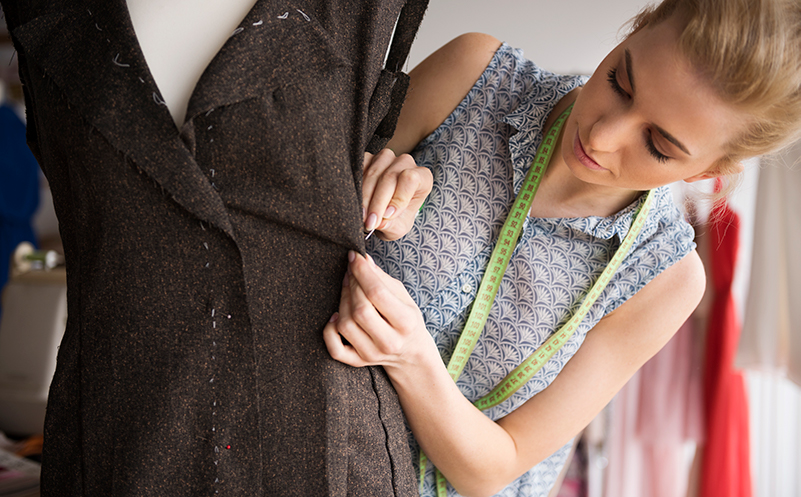Являясь ведущим производителем высококачественного трикотажа в Китае, мы на протяжении многих лет сотрудничаем с несколькими европейскими брендами. Одна из постоянных проблем, которую мы наблюдаем, — это чрезмерное количество образцов мусора при разработке швейной продукции. Это может оказаться дорогостоящей и трудоемкой проблемой, которая повлияет как на ваш доход, так и на репутацию вашего бренда. В этой статье мы обсудим пять распространенных ошибок, которые приводят к большим потерям проб, и предложим практические решения для решения этих проблем.
1. Постоянное переворачивание

Одним из самых больших препятствий, которые необходимо преодолеть в развитии одежды, является постоянное изменение песчаного ландшафта. Бренды обычно имеют опыт, который мы определяем как “постоянное перелистывание.” Этот феномен возникает, когда важные заинтересованные стороны, включая клиентов и руководителей, часто меняют свое мнение о будущем продукта. Такое беспорядочное поведение чрезвычайно вредно для процесса проектирования. Такое поведение приводит к дорогостоящим осложнениям, увеличению количества отходов образцов и разочарованию команды разработчиков.
Когда бренд не уверен в своей идентичности, он распространяется по всей цепочке поставок. Команды дизайнеров, которые часто имеют сжатые сроки реализации своих проектов, вынуждены неоднократно перепроектировать свои проекты, чтобы соответствовать новым требованиям. Это не только ухудшает творческий потенциал, но и существенно влияет на объем выпускаемых образцов. Каждая новая итерация дизайна требует новых моделей, тканей и рабочей силы, что увеличивает затраты и продолжительность сроков выполнения заказа.
Кроме того, постоянные дискуссии могут отрицательно повлиять на настроение команды дизайнеров. Когда дизайнеры считают, что их усилия недооцениваются или подвергаются случайным изменениям, это может препятствовать инновациям и привести к потере талантов.
Чтобы противостоять последствиям постоянной ротации, брендам следует следовать следующим стратегиям:
- Четко определенное видение продукта: создайте подробное описание целевого рынка, размещения продукта и эстетического дизайна. Этот документ должен служить руководством для всего процесса разработки.
- Мощное лидерство. Ведущий и дальновидный лидер может обеспечить необходимую стабильность и руководство для команды разработчиков продукта.
- Эффективное общение. Открытое и честное общение со всеми сторонами
- Регулярные обновления и сеансы обратной связи могут помочь прояснить ожидания и предотвратить неверные интерпретации.
- Поэтапный процесс утверждения. Разделите процесс проектирования на отдельные этапы с конкретными критериями утверждения. Это может уменьшить количество изменений на поздних стадиях.
2. Свободные стандарты одобрения

Еще одним частым нарушением большого количества отходов является применение нестрогих допустимых стандартов одобрения. Когда командам разработчиков предоставляется слишком много места без конкретных указаний или ожиданий, они часто производят множество образцов, которые не соответствуют желаемым стандартам продукта. Это не только способствует увеличению отходов, но и препятствует способности команды дизайнеров совершенствовать свои навыки и развивать четкое понимание эстетической природы продукции.
Дизайнеры — творцы-индивидуалы, но их талант следует направлять, а не тратить зря. Когда стандарты одобрения не определены, дизайнеры будут полагаться на догадки при создании нескольких образцов в надежде добиться одобрения. Этот метод не только неэффективен, но и ставит под угрозу репутацию бренда.
Кроме того, более низкие стандарты одобрения могут привести к отсутствию подотчетности. Без ожиданий, характерных для сбоя образца, трудно определить причины сбоев образца и предпринять корректирующие действия.
Бренды должны продвигать более целенаправленный и эффективный процесс проектирования, который приводит к меньшему количеству образцов, более быстрому выходу на рынок и более высокому качеству продукции. Чтобы избежать опасности неполных одобрений, брендам следует:
- Подробное описание дизайна: опишите целевую аудиторию продукта, его особенности и желаемую эстетику. Это даст разработчикам прочный принцип и снизит вероятность создания нерелевантных образцов.
- Адекватная выборочная оценка: Создайте комплексный процесс оценки, включающий подробные комментарии и числовые значения. Это облегчит выявление областей, нуждающихся в улучшении, и предотвратит производство неприемлемых образцов.
- Приобретите программное обеспечение для проектирования: используйте программное обеспечение для проектирования и инструменты прототипирования для создания реалистичной визуализации конечного продукта. Это может способствовать снижению потребности в физических образцах и увеличению общего объема работ по проектированию.
3. Неэффективные обзоры
Комплексный и структурированный процесс проверки гарантирует, что продукт достигает желаемого качества и эстетических целей. К сожалению, многие популярные модные бренды имеют медленные и неэффективные процессы проверки, которые приводят к проблемам, путанице и, в конечном итоге, к большим потерям, чем необходимо.
Распространенные ошибки включают в себя включение слишком большого числа заинтересованных сторон, отсутствие определенных полномочий для принятия решений и непоследовательную обратную связь. Когда в процессе проверки участвуют несколько человек без определенной иерархии или структуры руководства, это может привести к противоречивым мыслям, задержкам и более высокой вероятности внесения изменений на поздних стадиях цикла разработки.
Чтобы оптимизировать процесс проверки и минимизировать количество отходов проб, рассмотрите следующие стратегии:
- Определите ключевых заинтересованных сторон: знайте, кто должен участвовать в процессе проверки, и осознавайте их роли и обязанности.
- Установите график проверки: создайте хронологический график процесса проверки, включая сроки для каждого этапа.
- Использование цифровых технологий для обмена и обсуждения образцов может упростить общение и уменьшить количество ошибок.
- Предоставляйте обратную связь, которая будет конкретной и конструктивной в процессе оценки. Избегайте двусмысленных или противоречивых утверждений.
- Централизованное принятие решений: назначьте одного человека, принимающего решения, для каждого типа продукта, чтобы избежать двусмысленности и задержек.
4. Ненужный ОВерконтроль

Чрезмерный контроль распространен во многих отраслях, и индустрия моды не одинока в этом. Когда руководители или менеджеры берут на себя слишком большую часть повседневной работы команды дизайнеров, это может отрицательно сказаться на творчестве, производительности и, в конечном итоге, на образцах отходов.
Чрезмерный контроль может принимать различные формы, в том числе задавать вопросы о проектных решениях, давать чрезмерные указания или игнорировать рекомендации команды. Хотя, вероятно, полезно внимательно наблюдать за каждым аспектом процесса проектирования, такой подход может препятствовать инновациям, способствовать возникновению страха и отрицательно влиять на способность команды решать проблемы самостоятельно.
Дизайнеры могут неохотно делиться своими мыслями или брать на себя ответственность, поскольку считают, что будут допущены ошибки. Это может помешать творчеству и привести к отсутствию участия в процессе проектирования. Кроме того, чрезмерное участие высшего руководства может затруднить процесс разработки и привести к проблемам.
Чтобы создать более продуктивную и творческую атмосферу, команда дизайнеров должна быть наделена полномочиями. Вот несколько подходов:
- Доверие и делегирование. Предоставьте команде разработчиков достаточную автономию для принятия решений в определенных областях.
- Установите точные цели: сообщите о желаемом результате и окажите необходимую помощь, не контролируя процедуру на микроуровне.
- Постоянный контроль: постоянно предоставляйте обратную связь и помощь, не вмешиваясь слишком усердно.
- Признавайте и отмечайте успех. Признавайте и отмечайте достижения команды дизайнеров, направленные на повышение морального духа и продвижение инноваций.
5. Обучение и развитие

Талантливая и преданная своему делу команда дизайнеров имеет решающее значение для сокращения объема отходов образцов и производства высококачественной продукции. К сожалению, многим модным организациям не уделяется приоритетного внимания инвестированию в развитие сотрудников, что приводит к отсутствию опыта и более высокой вероятности ошибок.
Без адекватной подготовки у дизайнеров может не хватить необходимых способностей для преобразования дизайнерских идей в образцы, которые можно будет создать. Это может привести к многочисленным повторным работам, дополнительному времени и более высоким затратам. Кроме того, отсутствие понимания отраслевых тенденций и потребительских предпочтений может препятствовать усилиям команды дизайнеров по созданию коммерчески успешных продуктов.
Чтобы создать успешную команду дизайнеров, важно выделять средства на постоянное обучение и развитие. Вот некоторые из наиболее важных стратегий:
- Навыки: Оцените конкретные способности и требования к знаниям команды разработчиков.
- Индивидуальное обучение: создавайте программы обучения, отвечающие выявленным требованиям, включая такие области, как технический дизайн, знание тканей и прогнозирование предстоящих тенденций.
- Программы наставничества: пара опытных дизайнеров будет служить руководством для менее опытного члена команды, что поможет облегчить передачу знаний и развитие навыков.
- Представление в отрасли: позвольте дизайнерам участвовать в отраслевых мероприятиях, выставках и конференциях, чтобы быть в курсе последних тенденций и методов.
- Культура постоянного обучения: продвигайте культуру постоянного обучения, поощряя сотрудников получать дополнительное образование и сертификацию.
Заключение
Сокращение количества отходов образцов имеет решающее значение для достижения большей устойчивости и прибыльности в индустрии моды. Решая пять критических проблем, упомянутых в этом сообщении блога – Постоянные перевороты, слабые стандарты одобрения, неэффективные процессы проверки, микроменеджмент и отсутствие обучения. – бренды могут значительно повысить свою производительность при разработке продуктов и снизить их воздействие на окружающую среду.
Внедрение таких стратегий, как ясность общения, определение ролей и постоянное обучение, может привести к более упорядоченному и совместному процессу проектирования.
Guoou Fashion специализируется на решении проблемы недостаточного профессионализма дизайнеров в индустрии свитеров. Guoou Fashion предлагает комплексный подход к расширению дизайнерских возможностей, предлагая более трех решений для пряжи и профессиональную группу экспертов, способную решать сложные детали и технические проблемы.
Готовы ли вы оптимизировать процесс разработки продукта и сократить потери образцов?
Связаться с нами сегодня, чтобы узнать, как мы можем поддержать успех вашего бренда.

 English
English Deutsch
Deutsch Français
Français Italiano
Italiano Español
Español Русский
Русский Polski
Polski Nederlands
Nederlands Svenska
Svenska

